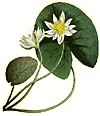Hyaloscyphaceae s. l. and related genera of Helotiaceae (Helotiales, Ascomycota) in Sweden

Image will follow shortly. Photo Pia Östensson
Summary
Our research focuses on the taxonomy and evolution of Hyaloscyphaceae sensu lato. In the traditional wide sense Hyaloscyphaceae is the largest and most diverse family in the order Helotiales (Leotiomycetes), with c. 70 genera and 1000 species. Recently, the family was shown to be polyphyletic and the species belong to six or more clades spread among other clades of Helotiales. The sampling of taxa and/or molecular characters is, however, very limited in molecular studies and the evolutionary history of these fungi is still very poorly understood. We surveyed hyaloscyphoid fungi widely in Sweden, and cultured the collections / species to preserve these in living condition and obtain larger and cleaner material (i.e. mycelium) for DNA extraction. We were able to considerably expand the number of taxa and molecular characters for a more robust phylogenetic hypothesis (in progress). Using the multi-gene phylogenies, combined with critical morphological, histochemical and ecological observations, we aim to delimit a monophyletic Hyaloscyphaceae and determine the family placement of other hyaloscyphoid fungi. Several hyaloscyphoid genera are clearly not monophyletic and split into two to four unrelated groups and we concurrently address this issue.
Hyaloscyphoid fungi produce tiny to small (0.05–8 mm) apothecia, externally covered with various types of hairs. The hair structure and histochemistry have been used to delimit genera and tribes/subfamilies. We aim to assess homology and evolution of the different hair types.
The species occur chiefly in temperate climates. Most hyaloscyphoid fungi are considered to be saprobic and can be found on almost any dead (or living) plant or fungal organic substrate, such as woody substrates, needles, bark, cones, cupules, remains of ferns, herbaceous stems, and bryophytes and lichens. Interestingly, a connection between mycorrhizal-forming sterile, asexual or sexual morphs and sexual Hyaloscypha species has recently been shown.
This research is funded by the Swedish Taxonomy Initiative (Svenska artprojektet)
Project Participants at the Museum
External Project Participants
University of Turku, Finland
Selected Publications
Kosonen T, Huhtinen S, Hansen K. 2020 (2021). Taxonomy and systematics of Hyaloscyphaceae and Arachnopezizaceae. Persoonia 46: 26–62.


